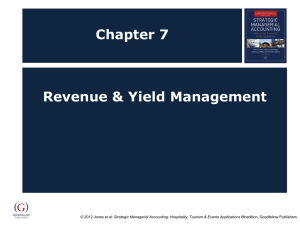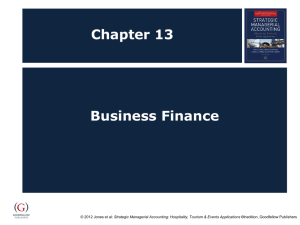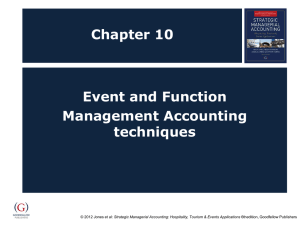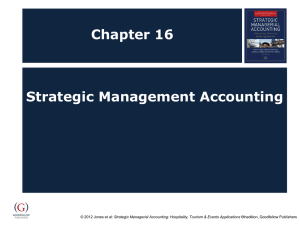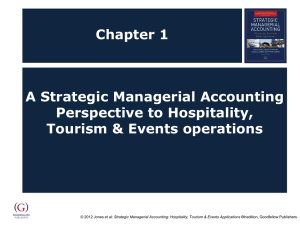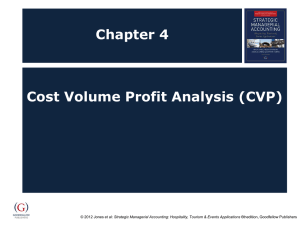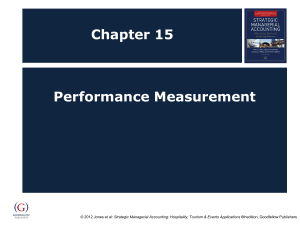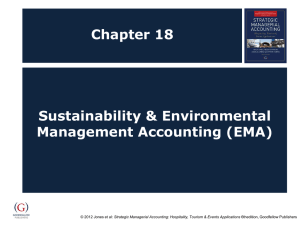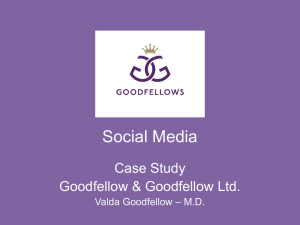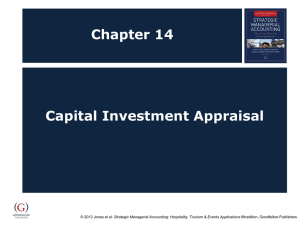Chapter 6 - Goodfellow Publishers
advertisement
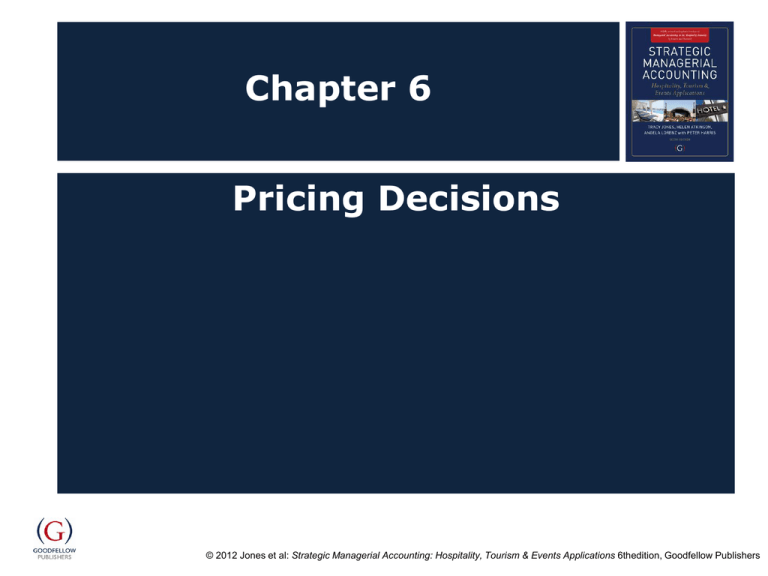
Chapter 6 Pricing Decisions © 2012 Jones et al: Strategic Managerial Accounting: Hospitality, Tourism & Events Applications 6thedition, Goodfellow Publishers Objectives After studying this topic you should be able to: Understand the importance of the pricing decision and its impact on the business; Develop a working knowledge of pricing methods; Consider pricing from a financial, economic and market perspective; and Reflect on the specific issues within hospitality, tourism and events sectors. © 2012 Jones et al: Strategic Managerial Accounting: Hospitality, Tourism & Events Applications 6thedition, Goodfellow Publishers Pricing approaches Financial Economic Market © 2012 Jones et al: Strategic Managerial Accounting: Hospitality, Tourism & Events Applications 6thedition, Goodfellow Publishers Financial approach to pricing Costs + Mark-up = Selling Price © 2012 Jones et al: Strategic Managerial Accounting: Hospitality, Tourism & Events Applications 6thedition, Goodfellow Publishers Financial approach to pricing Difference between mark-up and gross profit © 2012 Jones et al: Strategic Managerial Accounting: Hospitality, Tourism & Events Applications 6thedition, Goodfellow Publishers Financial approach to pricing Price discretion varies with proportion of fixed costs © 2012 Jones et al: Strategic Managerial Accounting: Hospitality, Tourism & Events Applications 6thedition, Goodfellow Publishers Cost-plus v. contribution margin pricing Cost-plus pricing Arguments for Contribution margin pricing Forms a logical basis to It allows scope over the recover total costs; pricing decision between Simple to understand and a floor and ceiling price; safe to use; It maximises contribution It provides a ‘fair’ profit; where price is elastic; and and It encourages price Marginal costs are said to stability, whereas constant more accurately reflect short-term price changes the future. may prejudice long-term objectives. © 2012 Jones et al: Strategic Managerial Accounting: Hospitality, Tourism & Events Applications 6thedition, Goodfellow Publishers Cost-plus v. contribution margin pricing (2) Criticisms against Cost-plus pricing Contribution margin pricing Ignores what customers are prepared to pay, suggesting the ‘correct’ price is costs plus assumed mark-up; It involves circular reasoning – costs depend on volume, but volume is influenced by price; Having multi-products/services renders allocation of fixed costs meaningless; It ignores competitors prices, sales will normally go to the lowest priced provider if product/service is comparable; and It exaggerates the precision by which costs may be allocated. Practical difficulties encountered with establishing the demand curve (setting price too high or too low); Difficulty in separating fixed and variable costs; Constant price changes could affect stability; and Competition could lead to low margin returns, so fixed costs are not covered. © 2012 Jones et al: Strategic Managerial Accounting: Hospitality, Tourism & Events Applications 6thedition, Goodfellow Publishers Pricing using target costing A company wishes to generate a 65% contribution towards fixed costs and profit. Its selling price is set at £50 by the market. Selling price = £ 50 Contribution = £50*65% = £(32.50) Target variable costs = £50-£32.50 = £ 17.50 © 2012 Jones et al: Strategic Managerial Accounting: Hospitality, Tourism & Events Applications 6thedition, Goodfellow Publishers Economists view of pricing © 2012 Jones et al: Strategic Managerial Accounting: Hospitality, Tourism & Events Applications 6thedition, Goodfellow Publishers Market based approaches to pricing Penetration pricing Price skimming Loss leaders Psychological pricing Competitor based pricing Flash sales © 2012 Jones et al: Strategic Managerial Accounting: Hospitality, Tourism & Events Applications 6thedition, Goodfellow Publishers Market based approaches to pricing © 2012 Jones et al: Strategic Managerial Accounting: Hospitality, Tourism & Events Applications 6thedition, Goodfellow Publishers Summary Traditional accounting based approaches are cost based, ‘costplus’ so add a ‘mark-up’ to cover profit and any costs not in the ‘cost base’. Contribution margin pricing is useful where there are high fixed costs, therefore a high level of price discretion. Target costing uses costs in a market orientated approach to pricing. The economists perspective is that one ‘best’ price can be established for optimising returns. Market based approaches consider what the market is prepared to pay for a product, this can vary with point in the product life cycle and market positioning of the product/service. © 2012 Jones et al: Strategic Managerial Accounting: Hospitality, Tourism & Events Applications 6thedition, Goodfellow Publishers
